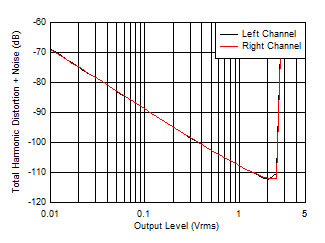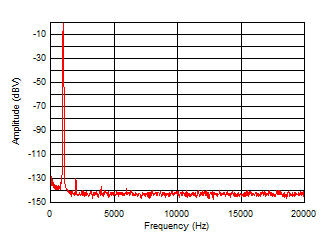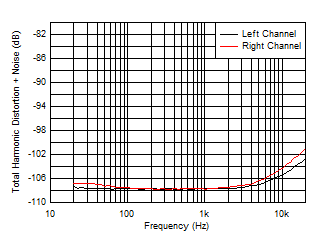SBOS859B March 2018 – July 2018 INA1620
PRODUCTION DATA.
- 1 Features
- 2 Applications
- 3 Description
- 4 Revision History
- 5 Pin Configuration and Functions
- 6 Specifications
- 7 Detailed Description
- 8 Application and Implementation
- 9 Power Supply Recommendations
- 10Layout
- 11Device and Documentation Support
- 12Mechanical, Packaging, and Orderable Information
Package Options
Mechanical Data (Package|Pins)
- RTW|24
Thermal pad, mechanical data (Package|Pins)
- RTW|24
Orderable Information
8.2.3 Application Curves
Figure 57 shows the maximum output voltage achievable for a 32-Ω load before the onset of clipping (±5-V supplies), indicated by a sharp increase in distortion. As more current is delivered by the output transistors of an amplifier, additional distortion is produced. At low frequencies, this distortion is corrected by the feedback loop of the amplifier. However, as the loop gain of the amplifier begins to decline at high frequencies, the overall distortion begins to climb. The unique output stage design of the INA1620 greatly reduces the additional distortion at high frequency when delivering large currents, as shown in Figure 58. High-ordered harmonics (above the 2nd and 3rd) are also kept to a minimal level at high output powers, as shown in Figure 59.

| 22.4-kHz measurement bandwidth |

| 1 kHz, 32-Ω load, 1 VRMS |

| 90-kHz measurement bandwidth, 1-VRMS output |